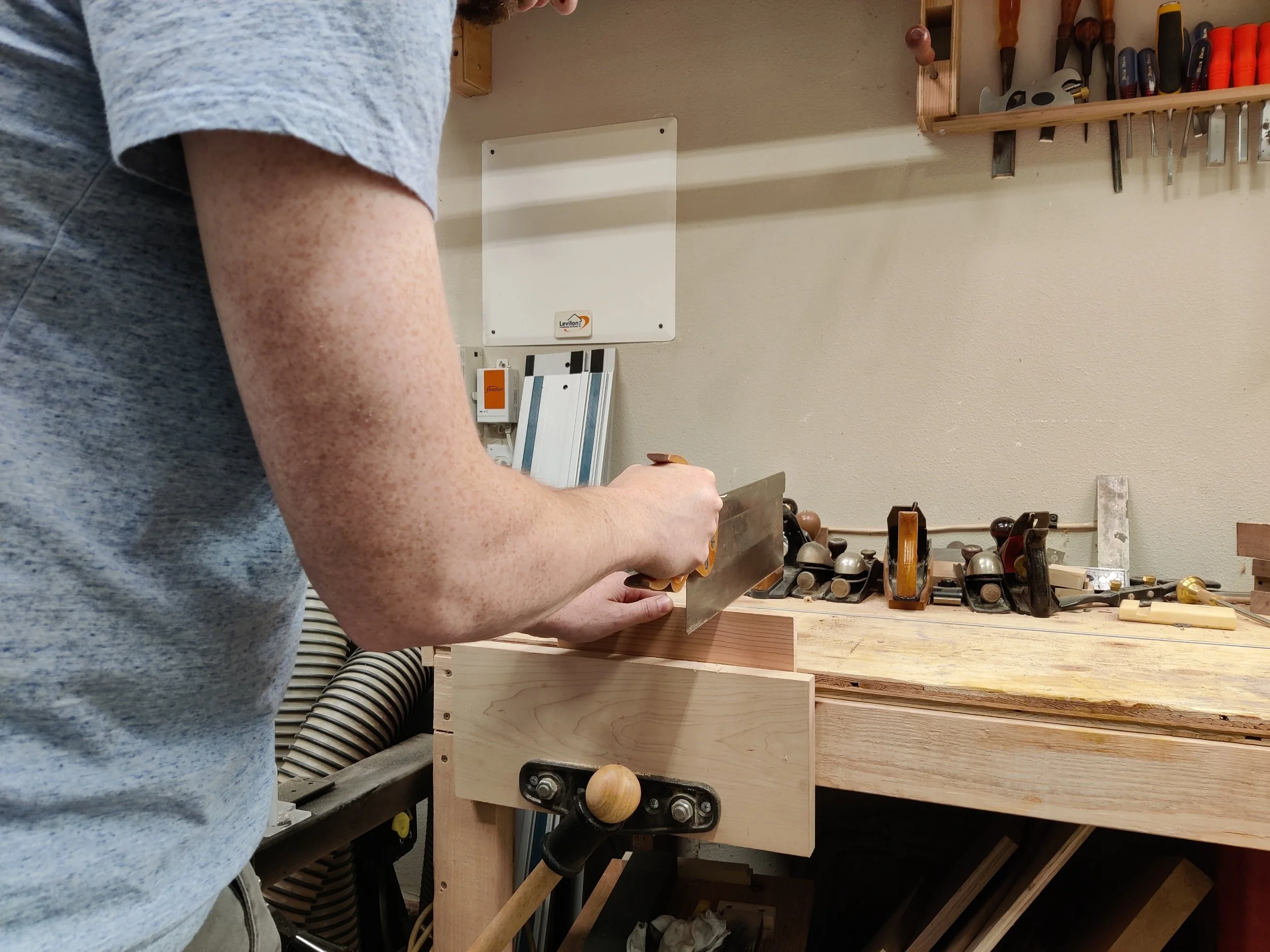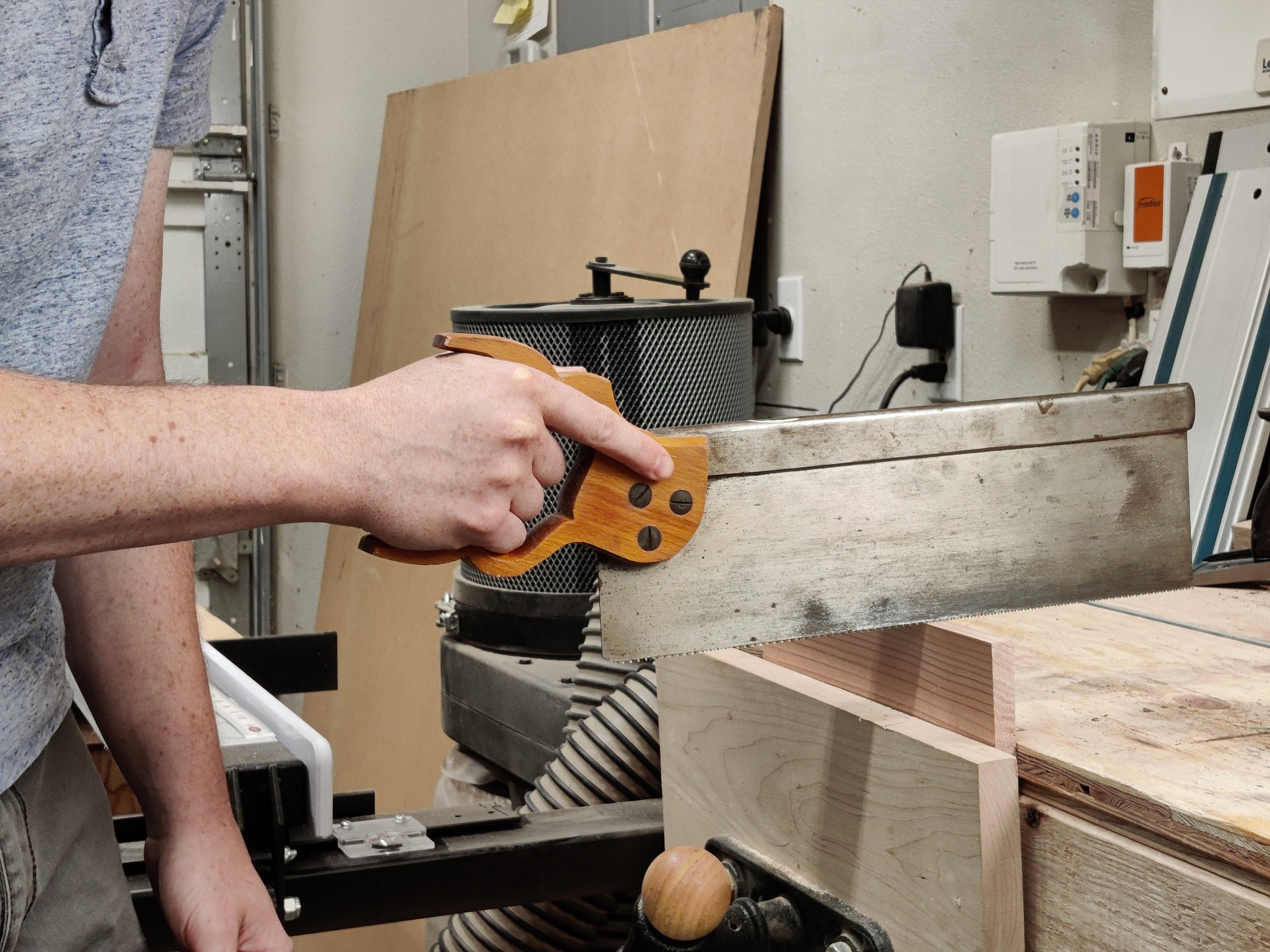The Most Important Hand Tool Tip - Hand Tool Essentials
Woodworking hand tools all do one thing, they remove material. Every single one cuts in some form. A saw slices, a plane shaves, a chisel does both, even sand paper takes a cut out of the wood.
Each tool is held in it’s own way to administer your force to cut wood fibers. You are the engine, but you are also steering. Powering hand tools is easy, anyone can saw a board, but sawing it right is tricky. If you have ever tried to saw the end off of a 2x4 you know it’s not easy to achieve a straight cut all the way through.
But what if there was one simple trick to achieving a perfect result? And what if that same trick could be used to true up edges with a plane or chisel in a straight line?
That one thing you must do is keep your arm in line with the tool. Sounds simple but there are a few things that go along with it to create that alignment from your elbow all the way through the tool.
Alignment, that’s what it comes down to. I realized I learned this lesson in my teens on the basketball court.
Body Alignment
I grew up glued to the Trailblazers, watching greats like Scottie Pippen, Rasheed Wallace, and Damon Stoudamire with their flashy moves, dunks, and jump shots from downtown. Those Blazers inspired me to join a youth program where I quickly realized basketball wasn’t about the amazing highlights, it was about the fundamentals.
Cliché, I know, but there was one fundamental that recently resurfaced. I was terrible at free throws. There is a lot of pressure standing at that line, especially in youth games with ending scores hardly breaking 20 making those single points matter.
But I learned, through my coaches and my dad that it was all about alignment to eliminate variables. Align everything the same way every single time.
It’s all about stacking the load and it starts with the feet pointed toward the basket. The knees are in line pointing in the same direction as your toes. Your shoulders are squared to the hoop. Your arm is bent but aligned with the shoulder and the ball is perched on top of your hand. The ball should stay in line with your shooting arm and your follow through ends with your hand pointing toward the basket. Everything is in line with the hoop giving the ball no option but to go straight. Will you make it every time? No, but your chances of success go way up.
Apply the same concept to your saw. Tuck your arm, align your wrist and elbow, and point your finger and by extension the saw which will have no option but to cut on your line.
In Practice
Keep your arm straight and you will saw straight. Easy to say, tough to do.
The trick is to position your body so your elbow doesn’t bump into your side. Now grasp the saw with three fingers and point that index finger. Remember, the saw will go where you point. Keep your grip loose, but firm. The rule here is if your knuckles are white you are gripping too tight.
Straight wrist, removing variables. Every component has a job. The hand grips, elbow hinges, the arm moves, the saw cuts.
Standing sideways, allowing room for the elbow to move freely.
Keep the finger pointed. The saw will cut where you point.
Put the saw on your line and stack your wrist and elbow all in line with the line on your board. Your saw has no option but follow the line, as long as you keep everything going straight.
By maintaining the same arm position you eliminate a variable. Consistency is created when variables are controlled. Your job is to move the saw forward and backward in a straight line. Let the saw’s weight do the cutting and concentrate on
The same principle can be applied to other hand tools. When using a hand plane, the dominant hand goes in the tote (handle), index finger is pointed, and the elbow is in line with the hand to propel the plane forward. This way you are less likely to tilt the plane side to side, causing a deeper cut on one edge of the board.
Same as sawing. Pointed finger, straight wrist
Elbow hinges and the arm propels so the tool can cut
Translate this motion into other areas and you’ll notice a considerable improvement in consistency, whether that’s sharpening, chiseling, or even power tool work. By eliminating unwanted movement you will increase your efficiency and improve your results by laying down the power where you want and only cutting the fibers meant to be cut.






